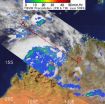Large-scale analysis identifies new genetic alterations associated with height
2010-12-31
(Press-News.org) A large collaborative study has added to the growing list of genetic variants that determine how tall a person will be. The research, published by Cell Press on December 30 in the American Journal of Human Genetics, identifies uncommon and previously unknown variants associated with height and might provide insight into the genetic architecture of other complex traits.
Although environmental variables can impact attained adult height, it is clear that height is primarily determined by specific alleles that an individual inherits. Height is thought to be influenced by variants in a large number of genes, and each variant is thought to have only a small impact on height. However, the genetics of height are still not completely understood. "All of the variants needed to explain height have not yet been identified, and it is likely that the additional genetic variants are uncommon in the population or of very small effect, requiring extremely large samples to be confidently identified," explains Dr. Hakon Hakonarson from The Children's Hospital of Philadelphia.
To search for genetic variants associated with adult height, researchers performed a complex genetic analysis of more than 100,000 individuals. "We set out to replicate previous genetic associations with height and to find relevant genomic locations not previously thought to underpin this complex trait" explains Dr. Brendan Keating, also from The Children's Hospital of Philadelphia. The authors report that they identified 64 height-associated variants, two of which would not have been observed without such a large sample size and the inclusion of direct genotyping of uncommon single-nucleotide polymorphisms (SNPs). A SNP is a variation in just one nucleotide of a genetic sequence; think of it as a spelling change affecting just one letter in an uncommonly long word.
These results suggest that genotyping arrays with SNPs that are relatively rare and occur in less than 5% of the population have the ability to capture new signals and disease variants that the common SNP arrays missed (i.e., 30 new signals in this study), as long as sample sizes are large enough. These low-frequency variants also confer greater effect sizes and, when associated with a disease, could be a lot closer to causative than more common variants. "The increased power to identify variants of small effect afforded by large sample size and dense genetic coverage including low-frequency SNPs within loci of interest has resulted in the identification of association between previously unreported genetic variants and height," concludes Dr. Keating.
INFORMATION:
Want more research news from Cell Press? Go to: http://www.eurekalert.org/jrnls/cell/pages/index.php
To download a copy of the research please go to http://www.eurekalert.org/jrnls/cell/pages/ajhg.php
END
ELSE PRESS RELEASES FROM THIS DATE:
2010-12-31
ANN ARBOR, Mich. — A lung transplant can mean a new chance at life. But many who receive one develop a debilitating, fatal condition that causes scar tissue to build up in the lungs and chokes off the ability to breathe.
University of Michigan researchers hope a new diagnostic tool they developed to predict bronchiolitis obliterans syndrome (BOS) will allow doctors to intervene earlier and, ultimately, to provide life-saving treatments.
BOS is the leading cause of death for those who survive one year after lung transplantation and more than half of recipients will develop ...
2010-12-31
Emergency department overcrowding can result in long waiting times for seriously ill patients. They then compete with patients with less severe illnesses for the next available treatment. In this edition of Deutsches Ärzteblatt International (Dtsch Arztebl Int 2010; 107[50]: 892), Michael Christ and his coauthors provide an overview of current practice for initial assessment of emergency patients.
Triage provides reliable methods that can be used to assess the severity of an illness and the urgency of treatment in emergency departments.
In English-speaking countries, ...
2010-12-31
An influx of invasive species can stop the dominant natural process of new species formation and trigger mass extinction events, according to research results published today in the journal PLoS ONE.
The study of the collapse of Earth's marine life 378 to 375 million years ago suggests that the planet's current ecosystems, which are struggling with biodiversity loss, could meet a similar fate.
Although Earth has experienced five major mass extinction events, the environmental crash during the Late Devonian was unlike any other in the planet's history.
The actual number ...
2010-12-31
Tel Aviv ― It has long been believed that modern man emerged from the continent of Africa 200,000 years ago. Now Tel Aviv University archaeologists have uncovered evidence that Homo sapiens roamed the land now called Israel as early as 400,000 years ago ― the earliest evidence for the existence of modern man anywhere in the world.
The findings were discovered in the Qesem Cave, a pre-historic site located near Rosh Ha'ayin that was first excavated in 2000. Prof. Avi Gopher and Dr. Ran Barkai of Tel Aviv University's Department of Archaeology, who run the excavations, ...
2010-12-31
CORVALLIS, Ore. – Members of the engineering faculty at Oregon State University have invented a new type of radiation detection and measurement device that will be particularly useful for cleanup of sites with radioactive contamination, making the process faster, more accurate and less expensive.
A patent has been granted on this new type of radiation spectrometer, and the first production of devices will begin soon. The advance has also led to creation of a Corvallis-based spinoff company, Avicenna Instruments, based on the OSU research. The market for these instruments ...
2010-12-31
AUDIO:
Addiction researchers at Washington University School of Medicine in St. Louis have noticed an unexpected link between alcoholism risk and obesity. They report when a person has a genetic risk...
Click here for more information.
Addiction researchers at Washington University School of Medicine in St. Louis have found that a risk for alcoholism also may put individuals at risk for obesity.
The researchers noted that the association between a family history of alcoholism ...
2010-12-31
The GOES series of satellites keep an eye on the weather happening over the continental U.S. and eastern Pacific and Atlantic Oceans and had a busy time with wild weather in 2010. Today, GOES-13 captured one of the last images of North and South America in 2010 as the world continues to turn toward 2011.
The Geostationary Operational Environmental Satellite called GOES-13 satellite captured a "full-disk image" of North and South America in an image created December 30 at 1445 UTC (9:45 a.m. EST) as the world awaits the new year. The stunning image shows cloud cover associated ...
2010-12-31
System 98S is currently bringing rains and gusty winds to the northwestern coast of Western Australia, and NASA's Tropical Rainfall Measuring Mission satellite spotted areas of moderate to heavy rainfall in the system.
NASA's TRMM satellite captured an image of System 98S' rainfall when it passed overhead in space on Dec. 30 at 1310 UTC (8:10 a.m. EST). TRMM is a joint mission between NASA and the Japanese space agency JAXA that can estimate rainfall in a tropical cyclone from its vantage point in space.The heaviest rainfall was occurring over the Southern Indian Ocean ...
2010-12-31
AUDIO:
It’s not news that exercise is good for your health, but scientists continue to learn more about just how beneficial regular exercise can be. Now a study led by researchers...
Click here for more information.
Consistent exercise is associated with a lower risk of dying from colon cancer, according to a new study led by researchers at the Siteman Cancer Center at Washington University School of Medicine and Barnes-Jewish Hospital in St. Louis. The study is among ...
2010-12-31
Happy New Year!
The New Year is all about new beginnings. I love the idea that, with every January 1 that rolls around, I can start with a clean slate - all previous mistakes and misjudgments are forgotten and the future me will be perfect in every way. (Of course this ideal doesn't generally last past January 2 but hey...)
OK, so maybe you won't always manage to lose 20lbs, pay off your credit card in full every month, call your mom once a week, go to the gym at 6:30 every morning etc. The following suggestions may, however, enable you to avoid unnecessary grammar ...
LAST 30 PRESS RELEASES:
[Press-News.org] Large-scale analysis identifies new genetic alterations associated with height




